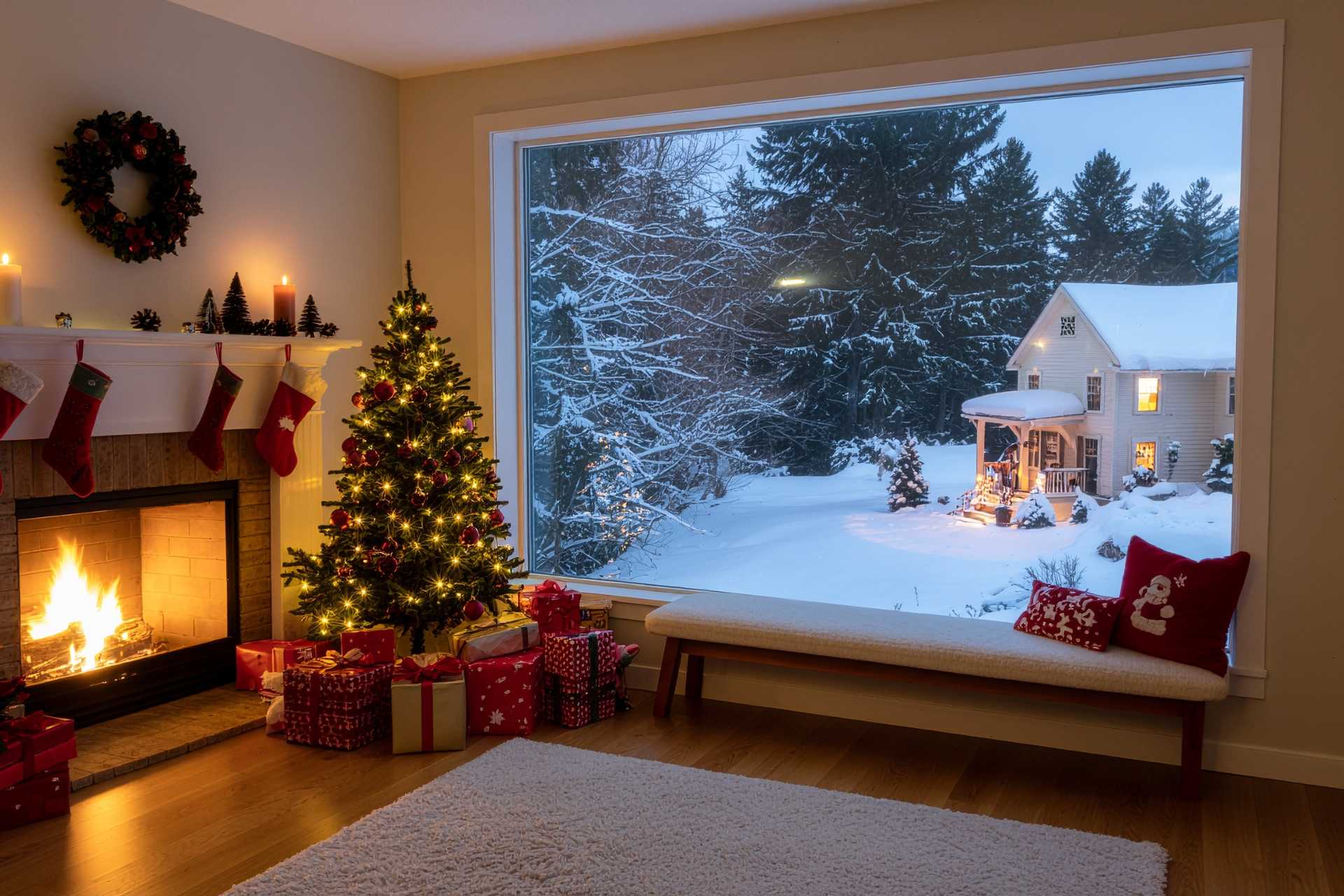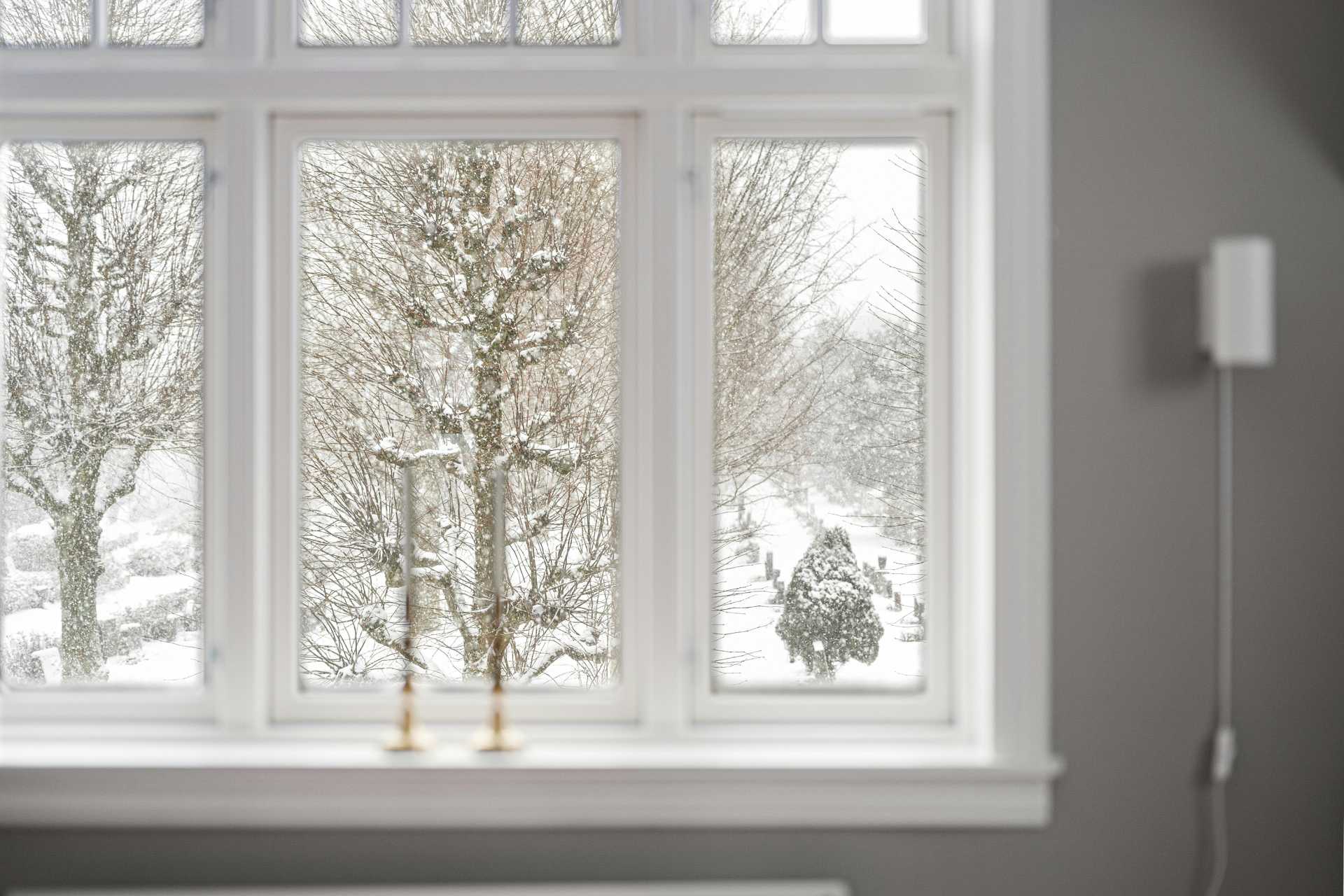It’s a scenario every homeowner knows well: the furnace blasts in winter, yet a chill lingers by the window, and in summer, the air conditioner runs non-stop while the upstairs remains stuffy. The immediate instinct is to call an HVAC company, but the true culprit is often not the equipment, but the old, inefficient windows and doors it’s fighting against. A full window replacement is often the key to solving this hidden energy crisis. This guide will reveal how leaky, poorly insulated windows and doors force your HVAC system into a state of overwork and how modern replacements create an airtight, insulated barrier, drastically reducing drafts, lowering energy bills, and creating a more comfortable home year-round.
The Invisible Thief: How Your Home Bleeds Heat in Winter
During our cold winters, a home’s two greatest enemies are heat conduction and air leakage. Both problems are enabled by outdated windows and doors. Conduction is the process of heat transferring through a solid material. Older windows are excellent conductors. This means warmth from your furnace passes directly through the glass to the freezing outdoors. This creates a “radiant cold” you can feel when standing near them, even without a draft. This effect forces your furnace to work harder just to counteract the constant heat being pulled from the room.
Air leakage, on the other hand, is the draft you can actually feel. Worn-out seals, cracked caulking, and warped frames create dozens of small gaps. Through a process called infiltration, cold, dense air is constantly pushed into your home. At the same time, warm, heated air escapes. This places your furnace on a treadmill it can never get off. It is forced to run continuously just to keep up with the lost heat. This leads to punishingly high energy bills and excessive wear and tear on the unit’s most vital components.
The Greenhouse You Didn’t Ask For: The Summer Heat Siege
The same weaknesses that let heat escape in winter are responsible for letting unwanted heat inside during summer. The first enemy is solar gain. Older, clear glass allows the sun’s powerful infrared heat to pass directly into the home. This rapidly heats the interior, much like a greenhouse. This is especially problematic for south- and west-facing rooms. They can become unbearably hot in the afternoon, forcing the air conditioner into overdrive. The HVAC system simply cannot keep up with this intense radiant heat, leading to stuffy and uncomfortable upper floors.
The second enemy is air infiltration, which is even more damaging in the summer. The same cracks that let in cold winter air now allow hot, humid summer air to seep inside. This forces your air conditioner to work much harder. It must not only cool the air but also remove the extra humidity. Removing humidity is a very energy-intensive process. This dual assault forces the A/C’s compressor to run for extended periods without rest. This leads to sky-high electricity bills and a significantly increased risk of premature system failure.
The Airtight Solution: The Science of Modern Windows
The solution to this year-round battle is found in the advanced technology of modern, energy-efficient windows. A high-performance window is a multi-layered defence system. It starts with having two or even three panes of glass, which create insulating air or gas-filled chambers that drastically reduce heat transfer through conduction. Many of these windows feature Low-E (Low-Emissivity) coatings, which are microscopically thin, transparent metallic layers that act like heat mirrors. In the winter, they reflect your home’s furnace-generated heat back into the room, while in the summer, they reflect the sun’s infrared heat back outside, keeping your home more comfortable in every season.
To further enhance their performance, the gaps between the panes are often filled with an inert gas, like argon or krypton. These gases are much denser than air, making them far better insulators and further slowing the transfer of heat. The window frame itself is also a critical component. Modern frames made from materials like uPVC or fibreglass are engineered with multiple chambers to resist heat transfer and are designed to accommodate durable seals and weatherstripping. This ensures a tight fit that eliminates the air leaks and drafts common in older, warped frames.
Closing the Door on High Energy Bills
The front door is often a huge, uninsulated hole in a home’s thermal envelope, and replacing it is a key part of creating a truly efficient home. Old, solid wood doors can warp and shrink with temperature changes, breaking their seal, while basic hollow-core metal doors offer almost no insulation. Modern fibreglass and steel doors, by contrast, are engineered with a high-density polyurethane foam core. This gives them an impressive insulation value (R-value) that is often five times greater than that of a solid wood door, effectively turning a weak point into a thermal barrier.
This advanced core is paired with a superior sealing system. Modern doors often feature magnetic or compression weatherstripping that creates a virtually perfect, airtight seal around the entire perimeter, completely eliminating drafts. Even the threshold at the bottom of the door is typically “thermally broken,” meaning the interior and exterior metal surfaces are separated by a non-conductive material to prevent cold from being conducted inside. When you consider weatherproofing your home, a new, insulated door is one of the most effective upgrades you can make for both comfort and energy savings.
The Payoff: A Comfortable Home and a Healthy HVAC
When you invest in high-performance windows and doors, the benefits are immediate and far-reaching. The most noticeable change is in your home’s comfort. By eliminating drafts and the “cold glass” effect, new windows and doors create a consistent, comfortable temperature throughout every room. There are no more “no-go zones” near windows in the winter, and rooms stay significantly cooler and less humid in the summer. This creates a more enjoyable living environment for your entire family, day in and day out. Even if you are not ready for a full replacement, it is important to check your existing units and reseal your windows to fix any obvious gaps.
The financial payoff is equally significant. A sealed building envelope means your HVAC system is no longer fighting a losing battle against the outdoors. It runs less often and more efficiently, leading to measurable savings on your heating and cooling bills every single month. This drastic reduction in workload and stress on its components can also add years to the lifespan of your furnace and air conditioner, delaying a very expensive replacement. A well-sealed home allows your HVAC system to operate exactly as it was designed to—with normal, predictable cycles that ensure its longevity.
Give Your HVAC the Teammate It Deserves
Your HVAC system is only as good as the home it tries to heat and cool. Leaky, inefficient windows and doors are its worst enemy. They force it into a relentless cycle of overwork. This costs you dearly in both money and comfort. High-performance window and door replacements are not just aesthetic upgrades. They are the single most effective investment in your home’s energy efficiency and your HVAC’s long-term health. By sealing your home’s envelope, you stop treating the symptoms with expensive service calls and start solving the problem at its source. You are not just buying new windows and do doors. You are buying comfort, savings, and peace of mind for years to come.





